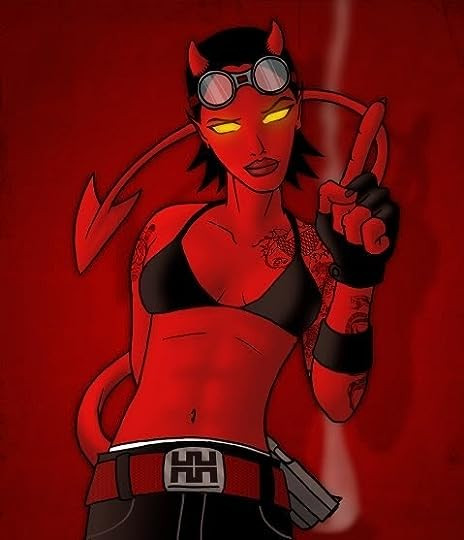The Chicago Tribune once boldly declared George R.R. Martin’s A Song of Ice and Fire series on par with Tolkien’s The Lord of the Rings, labeling it “fantasy for hip, smart people.” While such pronouncements might elicit an eye-roll from some, the sentiment captures the series’ broad appeal, extending beyond traditional fantasy readers. A Dance with Dragons, the fifth installment, continues this legacy, offering a sprawling and intricate narrative that both satisfies long-time fans and invites new readers into its complex world.
This analysis explores A Dance with Dragons, dissecting its narrative threads, character arcs, and thematic depth. While mirroring the original reviewer’s journey through the book, this exploration aims for a more structured and SEO-optimized approach, beneficial for readers seeking in-depth information about this pivotal book in the A Song of Ice and Fire saga.
Revisiting Familiar Faces and Embracing New Perspectives
For readers eagerly awaiting the continuation after A Feast for Crows, A Dance with Dragons delivers the welcomed return of beloved Point of View (POV) characters like Tyrion Lannister, Jon Snow, and Daenerys Targaryen. The anticipation of re-entering their perspectives is palpable, even while acknowledging the absence of other favorites such as Arya Stark, Brienne of Tarth, and Jaime Lannister. The subtle lament for Theon Greyjoy, “poor, stupid Theon!”, even before his chapters begin, hints at the emotional rollercoaster ahead.
A Dance with Dragons doesn’t shy away from the darker aspects of its characters’ journeys. Tyrion, for instance, is immediately immersed in self-pity and haunted by his past actions. This portrayal, however, is not gratuitous; it’s a logical consequence of the traumatic events he endured, adding layers to his already complex persona.
The narrative also provides satisfying moments of catharsis. The demise of Janos Slynt, a character loathed by many, is depicted with a sense of poetic justice. This event serves as a reminder of Martin’s skill in balancing grim realism with moments of deserved retribution.
Introducing enigmatic figures like the Three-Eyed Crow tree-man further deepens the mysteries of Westeros and its magical elements. This character’s cryptic nature and connection to Bran Stark’s storyline promise significant revelations in the books to come.
The Transformation of Theon Greyjoy: From嚣张 to Reek
The return of Theon Greyjoy is arguably one of the most compelling aspects of A Dance with Dragons. His transformation into Reek is a stark depiction of physical and psychological torture. While Theon’s past actions warrant condemnation, his arc becomes a study in the brutal consequences of war and the fragility of identity. The hope for a glimpse of the “old Theon” amidst the broken Reek underscores the reader’s investment in even the most flawed characters.
Ramsay Bolton’s character is meticulously detailed, solidifying his position as a truly horrifying antagonist. His history of depravity, intertwined with Reek, creates a villain that is both fascinating and repulsive. Despite his two-dimensionality as pure evil, Ramsay serves as a powerful force driving the narrative’s darker themes. The comparison to his father, Roose Bolton, highlights the nuanced spectrum of villainy within Martin’s world, where calculated cruelty can be more chilling than overt brutality.
Encounters and Echoes: New and Returning Faces
The reappearance of Xaro Xhoan Daxos adds a touch of exotic intrigue to Daenerys’ storyline. His ambiguous nature, described as “amusingly passive & fey, yet sinister,” contributes to the rich tapestry of characters populating Essos.
Tyrion’s journey through the ruins of Chroyane is a standout sequence. His encounter with the Stone Men on the Shy Maid is masterfully written, creating an atmosphere of profound unease and dread. This chapter is a testament to Martin’s ability to craft compelling and eerie scenes within his fantasy world.
Asha Greyjoy’s return injects a dose of Greyjoy tenacity and grit back into the narrative. Her character, flawed yet admirable, resonates with readers. Even her graphic sex scene, typical of the Greyjoys’ portrayal, serves to further define her character within the series’ established tone.
Davos Seaworth’s storyline continues to be a grounding force. His interactions with Wyman Manderly reveal the lingering impact of the Red Wedding and the simmering desire for vengeance. Davos’s quest, shrouded in mystery and hinting at cannibals and the whereabouts of Rickon Stark, propels a crucial Northern plotline forward. The unexpected return of Squire Wex adds a charming element, highlighting Martin’s talent for making even minor characters endearing and memorable. The question of Podrick Payne’s fate and his connection to Lady Stoneheart leaves a tantalizing thread for future books.
Melisandre’s POV chapter offers a significant shift in perspective. It humanizes a character previously perceived as villainous, revealing her motivations and belief in a greater purpose. This chapter challenges readers’ preconceptions and deepens the moral ambiguities within the narrative. The revelation of Mance Rayder’s survival and Rattleshirt’s demise further complicates the political landscape and subverts expectations.
Daenerys’ chapters, while acknowledged as occasionally slow-paced, are essential for depicting the complexities of ruling and governance in a foreign land. Her internal conflicts, particularly regarding Daario Naharis, showcase the personal challenges intertwined with her political responsibilities.
The set-piece of the novel, Daenerys’ experience in the fighting pits post-wedding, is a spectacular culmination of tension and action. The chapter’s richness in detail and character interactions culminates in the awe-inspiring flight of Daenerys and Drogon, a moment that compensates for the slower Meereenese chapters and provides a powerful, iconic scene.
Barristan Selmy emerges as a compelling “Man in the Autumn of Their Years” POV. His chapters not only offer wisdom and honor but also provide fascinating glimpses into Westeros’s history, enriching the world-building and lore. The desire for POVs from figures like Rhaegar Targaryen and Arthur Dayne speaks to the depth of Martin’s world and the reader’s hunger for more of its history.
The tragic fate of Quentyn Martell underscores the perilous nature of ambition and the often-cruel realities of Martin’s world. His story serves as a poignant reminder that good intentions do not guarantee success, and even noble characters can fall victim to circumstance and their own shortcomings.
The epilogue, a signature element of A Song of Ice and Fire, delivers a satisfying conclusion while setting the stage for future developments. Varys’s reappearance, along with the introduction of his “little birds” and the deaths of key characters, maintains the series’ tradition of impactful epilogues that shift the power dynamics and raise the stakes.
Astro-Freudian Analysis: Unpacking the Psyche of Westeros
 Photobucket
Photobucket
The Id in A Dance with Dragons, represented by the raw desires and ambitions of characters like Theon and Asha Greyjoy.
The original review delves into an intriguing “Astro-Freudian Analysis,” applying astrological Virgo traits and Freudian psychoanalytic concepts (Id, Ego, Superego) to interpret character motivations in A Dance with Dragons. While unconventional, this approach offers a unique lens through which to examine the characters.
The analysis posits that Martin, a Virgo, projects aspects of his own psyche onto his characters. The Id, representing primal drives and desires, is embodied by the Greyjoys, Theon and Asha. Their storylines, marked by ambition, sexual aggression, and violence, are ultimately met with punishment, reflecting a Virgoan critique of unrestrained Id impulses.
 Photobucket
Photobucket
The Superego in A Dance with Dragons, embodied by characters like Eddard Stark and Jon Snow, driven by duty and altruism.
The Superego, representing conscience and moral ideals, is attributed to characters like Eddard Stark, Catelyn Stark, Barristan Selmy, Davos Seaworth, and Jon Snow. These characters, driven by altruism and duty, often face tragic fates, highlighting the potential pitfalls of rigid adherence to ideals in a morally ambiguous world.
 Photobucket
Photobucket
The Ego in A Dance with Dragons, exemplified by Daenerys and Tyrion, balancing desires with responsibilities and reality.
The Ego, the mediator between Id and Superego, striving for balance and reality, is found in Daenerys and Tyrion. Daenerys grapples with balancing her desires for power and love with her responsibilities as a ruler. Tyrion navigates his vengeful impulses with his inherent sense of justice and strategic thinking. The analysis suggests Tyrion, with his critical, analytical, and sharp-tongued nature, might be a stand-in for Martin himself, embodying the Virgoan struggle for balance.
Final Verdict: A Flawed Masterpiece
In summary, A Dance with Dragons is deemed a “typically awesome entry” in the A Song of Ice and Fire series, albeit with acknowledged flaws. Its length and vast cast of characters can be overwhelming. The reviewer humorously notes Martin’s repetitive use of certain phrases, a minor but noticeable stylistic quirk. While perhaps less focused than A Feast for Crows, A Dance with Dragons compensates with its expansive scope and diverse perspectives. The single major set-piece, Daenerys’ flight on Drogon, is lauded as exceptional.
Despite its imperfections, the book’s strengths are undeniable. The return of beloved POVs and the introduction of compelling new ones, particularly Theon/Reek, are highlights. Davos’ chapters and his interactions with Wyman Manderly are praised for their intrigue. The thematic exploration of governance, identity, and the roles people are forced to play is highlighted as a continuing strength of the series, echoing points made in other reviews.
 Photobucket
Photobucket
Patchface, an unsettling character in A Dance with Dragons, adding to the book’s eerie atmosphere.
Ultimately, A Dance with Dragons is celebrated as a captivating and essential installment in the A Song of Ice and Fire saga, from its intriguing prologue to its completely satisfying epilogue. It solidifies its place as a must-read for fans of epic fantasy and those seeking complex characters and morally gray narratives.
A Grim Roll Call: Major Deaths in A Dance with Dragons and Beyond
The review concludes with a “Death List,” a grim reminder of the high mortality rate in A Song of Ice and Fire. This list, while presented with a touch of dark humor, underscores the series’ unflinching portrayal of death and its consequences. Characters like Viserys Targaryen, Eddard Stark, Robb Stark, Joffrey Baratheon, and Oberyn Martell are listed, their deaths serving as pivotal moments throughout the series, culminating in deaths within A Dance with Dragons such as Janos Slynt, Quentyn Martell, Grand Maester Pycelle, and Kevan Lannister. This morbid inventory reinforces the perilous world Martin has created and the ever-present threat of mortality that hangs over its characters.
This analysis of A Dance with Dragons aims to provide a comprehensive overview, mirroring the original reviewer’s journey while enhancing clarity and SEO value for readers seeking to explore this significant book in the A Song of Ice and Fire series.
